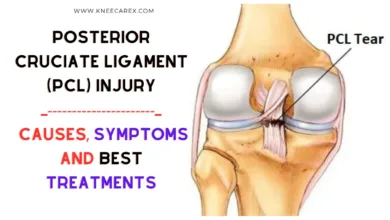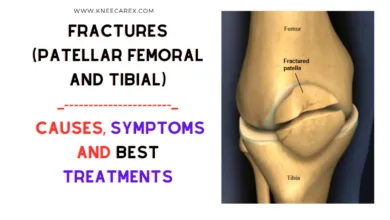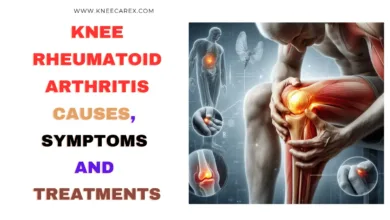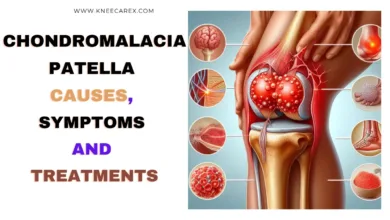Gout in the Knee: Causes, Symptoms and Best Treatments
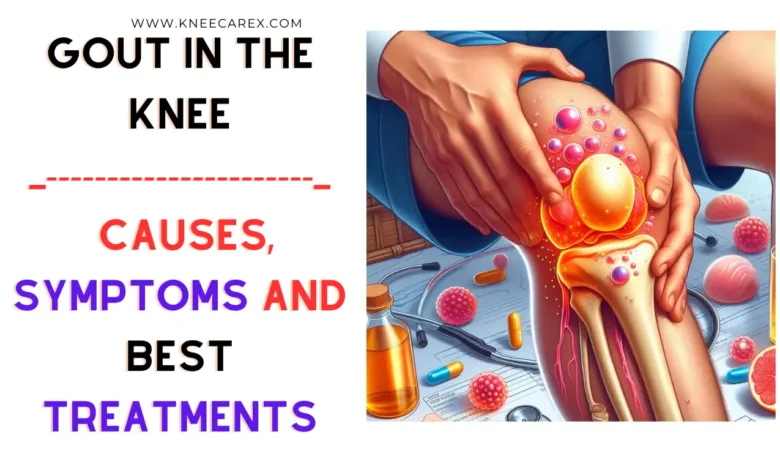
Imagine waking up one day to find your knee swollen, red, and tender. Walking becomes excruciating, and every movement sends a sharp jolt of pain through your body. This could be a sign of gout in the knee, a condition that often surprises people with its sudden onset and debilitating effects. This article will delve into gout in the knee, exploring its causes, unraveling its symptoms, and shedding light on effective treatments. Whether you’re dealing with this condition firsthand or simply seeking to understand it better, join us on this enlightening journey through the intricacies of gout in the knee.
Contents
- 1 Understanding Gout in the Knee
- 2 What Triggers Gout in the Knee
- 3 Recognizing Gout in the Knee
- 4 How to Confirm Gout in the Knee
- 5 Managing Gout in the Knee
- 6 Preventing Gout Flare-Ups
- 7 FAQ’s
- 7.1 What does gout in the knee feel like?
- 7.2 How do you treat gout in the knee joint?
- 7.3 How do you get rid of gout in your knees fast?
- 7.4 Is walking good for gout in the knee?
- 7.5 How do you get rid of gout in the knee?
- 7.6 What stops gout pain immediately?
- 7.7 What is the most common trigger for gout?
- 7.8 What causes gout to flare up?
- 7.9 How can you tell if you have gout in your knee?
- 7.10 Can you feel the beginning of gout?
- 7.11 What is the fastest way to cure gout in the knee?
- 7.12 How do you detect gout early?
- 7.13 How do you get rid of gout in your knees fast?
- 7.14 What stops gout pain immediately?
- 7.15 How do you treat gout in the knee joint?
- 7.16 What can I drink to flush out gout?
- 8 Conclusion: Gout in the Knee
Understanding Gout in the Knee
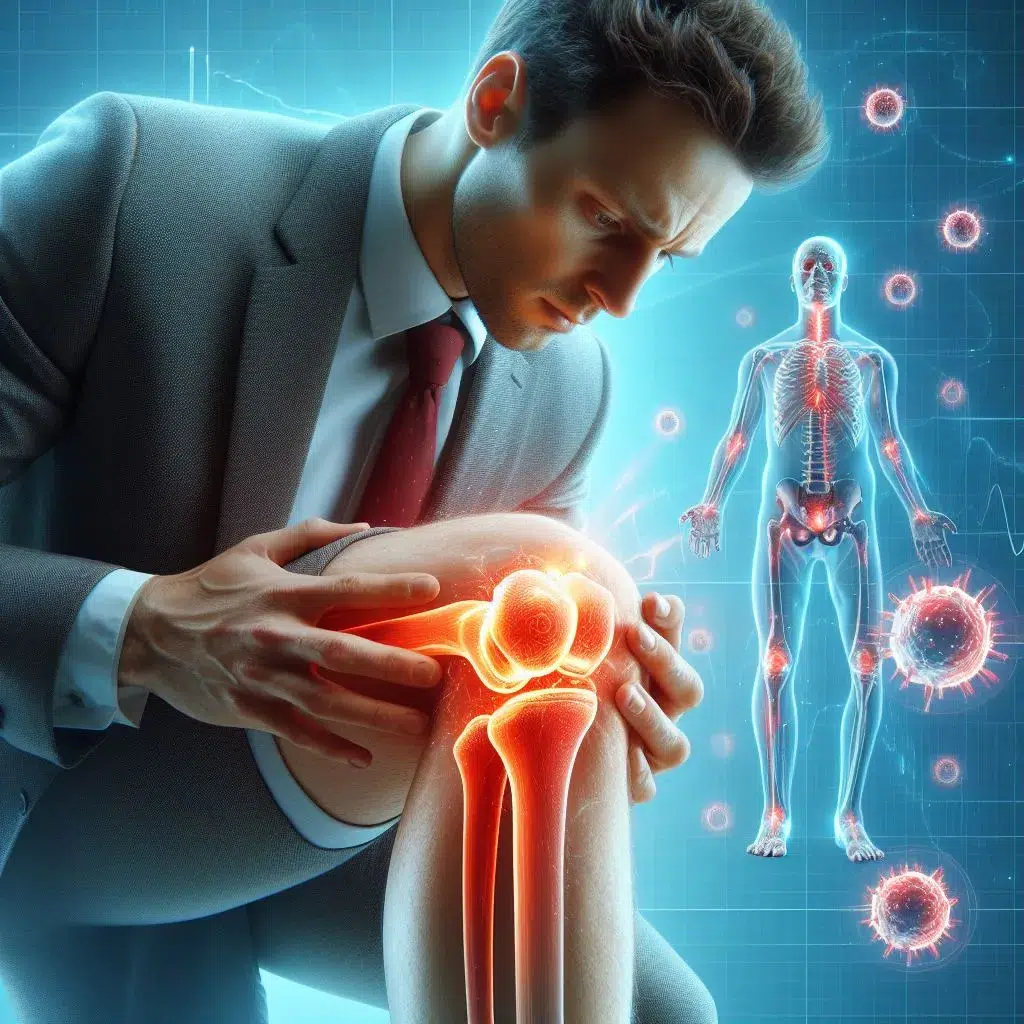
Understanding the causes of gout in the knee is crucial for effective management. Dietary choices, genetic predisposition, obesity, and certain medications can all contribute to heightened uric acid levels. Furthermore, acknowledging the link between gout flares and joint inflammation facilitates proactive measures to alleviate symptoms or prevent recurrence. In exploring these facets of gout in the knee, individuals gain valuable insight into how they can take control of their condition and improve their quality of life.
What Triggers Gout in the Knee
Gout in the knee, a form of arthritis, is often triggered by the excessive accumulation of uric acid crystals in the joints. While diet plays a significant role in gout development, other factors may also contribute to its onset in the knee. One less-discussed trigger is dehydration. When the body lacks sufficient fluids, uric acid concentrations can rise, leading to crystallization and potential gout flare-ups in the knee joint.
Moreover, research suggests that obesity and high blood pressure could be linked to an increased risk of developing gout in the knee due to their impact on inflammation and metabolic processes within the body. These insights highlight how various factors intersect to provoke gout episodes, explicitly targeting the knee, emphasizing the need for a holistic approach when managing this painful condition.
Recognizing Gout in the Knee
Gout is commonly associated with the big toe but can also affect joints like the knee. Recognizing gout in the knee is crucial for early treatment and relief. One key symptom to watch out for is sudden and severe pain, often accompanied by swelling, redness, and warmth around the affected knee. This intense discomfort can make even simple movements incredibly painful, leading to difficulty walking or bending the knee.
In addition to physical symptoms, it’s essential to be aware of other signs that may point to gout in the knee. These can include a feeling of stiffness or a limited range of motion in the knee joint. Furthermore, individuals with gout might experience fever or chills during an episode of inflammation in their knees. Recognizing these diverse indicators can help differentiate gout from other conditions and expedite appropriate medical attention for effective management.
How to Confirm Gout in the Knee

Check Best Radiologists Near You for X-rays and Ultrasounds
Furthermore, understanding the specific symptoms associated with gout in the knee can aid in confirming the condition. Intense pain, swelling, redness, and warmth in the affected knee joint are vital indicators. Additionally, a history of gout attacks or risk factors such as obesity, high alcohol consumption, and certain medications can also support the diagnosis. By recognizing these distinct manifestations and risk factors, individuals can be better equipped to seek appropriate medical attention and commence targeted management strategies for gout in the knee.
Managing Gout in the Knee
Gout in the knee can be debilitating, causing intense pain and limited mobility. Managing this condition requires a holistic approach that involves both medication and lifestyle changes. While medications such as nonsteroidal anti-inflammatory drugs (NSAIDs) are commonly prescribed to alleviate pain and inflammation, dietary modifications can also play a crucial role in managing gout in the knee. Limiting the intake of purine-rich foods such as red meat, organ meats, and shellfish can help reduce the production of uric acid, which is the primary cause of gout.
Moreover, incorporating low-fat dairy products into your diet has lowered the risk of developing gout. Exercise is another critical component in managing gout in the knee. Low-impact activities like swimming or cycling can help maintain joint flexibility and overall fitness while reducing the potential for flare-ups. By taking a comprehensive approach that addresses medication and lifestyle modifications, individuals with gout in the knee can effectively manage their symptoms and improve their quality of life.
Preventing Gout Flare-Ups

Furthermore, avoiding alcohol consumption, particularly beer and spirits high in purines, can be beneficial for those prone to gout flare-ups. Minimizing stress through relaxation techniques like yoga or meditation contributes to overall gout management. It’s essential for individuals with gout in the knee to work closely with their healthcare provider to develop a comprehensive plan that includes medication and lifestyle modifications to prevent future flare-ups and minimize discomfort.
FAQ’s
What does gout in the knee feel like?
Gout in the knee is a severe, painful condition causing swollen, red, and tender joints. It can wake people up from sleep, make them reluctant to apply pressure, and make daily tasks difficult. The pain can also cause frustration and helplessness and disrupt daily routines. It limits mobility and impacts the quality of life, leaving individuals emotionally exhausted and desperate for relief.
How do you treat gout in the knee joint?
Gout in the knee joint is a painful condition that requires treatment to reduce inflammation, alleviate pain, and prevent future attacks. Common medications include NSAIDs and colchicine. Lifestyle changes, such as a low-purine diet, hydration, and regular exercise, are also crucial. Avoiding purines, avoiding high-purine foods, and managing weight can help prevent flare-ups and manage symptoms effectively.
How do you get rid of gout in your knees fast?
If you have gout in your knees, it can be excruciating and make it hard to move. However, some quick fixes can help ease the pain and soreness. First, staying hydrated is essential because it helps flush out the uric acid crystals that are worsening your gout. Other things that can help lower inflammation and ease gout pain are eating anti-inflammatory foods like cherries, ginger, and turmeric. Putting ice packs or cold clothes on the hurt knee can also help immediately by numbing the area and lowering the swelling.
Is walking good for gout in the knee?
Research has shown that walking can benefit those suffering from gout in the knee. While it may seem counterintuitive, as weight-bearing activities could exacerbate the pain, moderate exercise like walking can help manage symptoms and improve overall joint function. By encouraging blood flow and circulation to the affected area, walking can aid in reducing inflammation and preventing further uric acid crystal accumulation in the joints. Additionally, maintaining a healthy body weight through regular physical activity, such as walking, can alleviate some of the added stress on the knee joints, ultimately decreasing gout flare-ups.
How do you get rid of gout in the knee?
Gout in the knee is a painful condition that can be managed with medication, dietary changes, and regular exercise. Nonsteroidal anti-inflammatory drugs (NSAIDs) and corticosteroids can reduce inflammation and alleviate pain. A diet rich in fruits, vegetables, whole grains, and low-fat dairy products can lower uric acid levels and prevent flare-ups. Maintaining a healthy weight and engaging in low-impact activities can also help manage gout in the knee.
What stops gout pain immediately?
Gout pain can be managed with medication like NSAIDs, corticosteroids, or colchicine, which reduce inflammation. Applying ice to the affected area and staying hydrated can provide immediate relief. Avoiding trigger foods high in purines, such as red meat and alcohol, can also help prevent and alleviate gout pain.
What is the most common trigger for gout?
Gout is a common condition caused by the consumption of purine-rich foods, such as red meat, seafood, organ meats, and alcohol. This leads to elevated uric acid levels in the body, which can cause painful joint inflammation. Obesity and excessive weight gain also contribute to gout. Moreover, underlying health conditions like high blood pressure, diabetes, and kidney disease can exacerbate the risk of gout attacks. To manage gout, individuals should focus on their diet and overall health status, adjusting their diet and lifestyle to improve their quality of life.
What causes gout to flare up?
Gout flare-ups are often linked to purine-rich foods, high uric acid levels, dehydration, alcohol, medications like diuretics and aspirin, obesity, and high blood pressure. These factors can cause gout attacks by affecting uric acid levels, leading to accumulation and potential crystallization in joints. Addressing these lifestyle factors can help manage gout effectively.
How can you tell if you have gout in your knee?
Gout in the knee is characterized by sudden, intense pain, swelling, redness, and warmth in the affected joint. It can cause flare-ups, making it difficult to put weight on the affected leg. Increased sensitivity to touch or pressure around the joint, even light contact with clothing or bedding, can trigger pain. These symptoms may vary but should prompt medical attention for an accurate diagnosis and appropriate treatment.
Can you feel the beginning of gout?
Gout is an inflammatory type of arthritis that affects the joints; it often begins with sudden and intense pain in the affected area. This pain can be so severe that it wakes you up in the middle of the night. The onset of gout is often characterized by swelling, redness, and tenderness in the joint, commonly in the big toe. Many individuals describe this initial sensation as feeling like their toe is on fire or throbbing with unbearable discomfort. Additionally, as gout progresses, these symptoms may spread to other joints, such as the ankles, knees, elbows, and wrists.
What is the fastest way to cure gout in the knee?
Gout in the knee can be excruciating, and finding the fastest way to cure it is a top priority for those suffering from this condition. While there is no instant cure, several practical strategies exist to alleviate symptoms and speed recovery. One approach is to focus on lifestyle changes such as maintaining a healthy weight, staying hydrated, and avoiding foods high in purines that can trigger gout attacks. Additionally, over-the-counter pain medication or prescription anti-inflammatory drugs can provide quick relief from the intense pain associated with gout in the knee.
How do you detect gout early?
Detecting gout early is crucial for preventing long-term joint damage and managing the associated pain. One method for early detection is to monitor uric acid levels in the blood. High levels of uric acid can indicate the presence of gout even before symptoms appear. Moreover, paying attention to sudden bouts of intense joint pain, especially in the big toe, can be an early indicator of gout.
How do you get rid of gout in your knees fast?
Gout in the knees can be alleviated by modifying diets, staying hydrated, using ice packs and NSAIDs, or consulting a healthcare professional. However, long-term lifestyle changes and medical advice are crucial for proper management. Avoiding purines like red meat and shellfish, staying hydrated, applying ice packs, and seeking prescription medications or corticosteroid injections can help alleviate symptoms.
What stops gout pain immediately?
There are several ways to stop gout pain immediately, from medication to natural remedies. One of the most effective methods is taking nonsteroidal anti-inflammatory drugs (NSAIDs) such as ibuprofen or naproxen, which can help reduce inflammation and provide quick relief from gout pain. Additionally, corticosteroids may be prescribed to immediately relieve severe gout symptoms, as they can quickly reduce inflammation and pain in the affected joint.
How do you treat gout in the knee joint?
Treating gout in the knee joint can be arduous, as it often involves managing the symptoms and underlying causes. Medication is one of the primary approaches to treating gout in the knee joint. Nonsteroidal anti-inflammatory drugs (NSAIDs) are commonly prescribed to help reduce pain and inflammation associated with gout flare-ups. Additionally, corticosteroids may be injected directly into the affected knee joint to relieve severe symptoms quickly.
What can I drink to flush out gout?
Staying hydrated is crucial for flushing out gout, as water dilutes uric acid, preventing flare-ups. Cherry juice, green tea, and lemon water are also beneficial due to their antioxidant and anti-inflammatory properties. These drinks provide hydration and aid in managing and preventing gout attacks.
Conclusion: Gout in the Knee
In conclusion, living with gout in the knee can be a challenging experience, affecting various aspects of daily life. However, it’s important to remember that effective management strategies and treatments are available to help alleviate symptoms and improve quality of life. Embracing a healthy lifestyle, including a balanced diet low in purine-rich foods and regular exercise, can be essential in managing knee gout.
